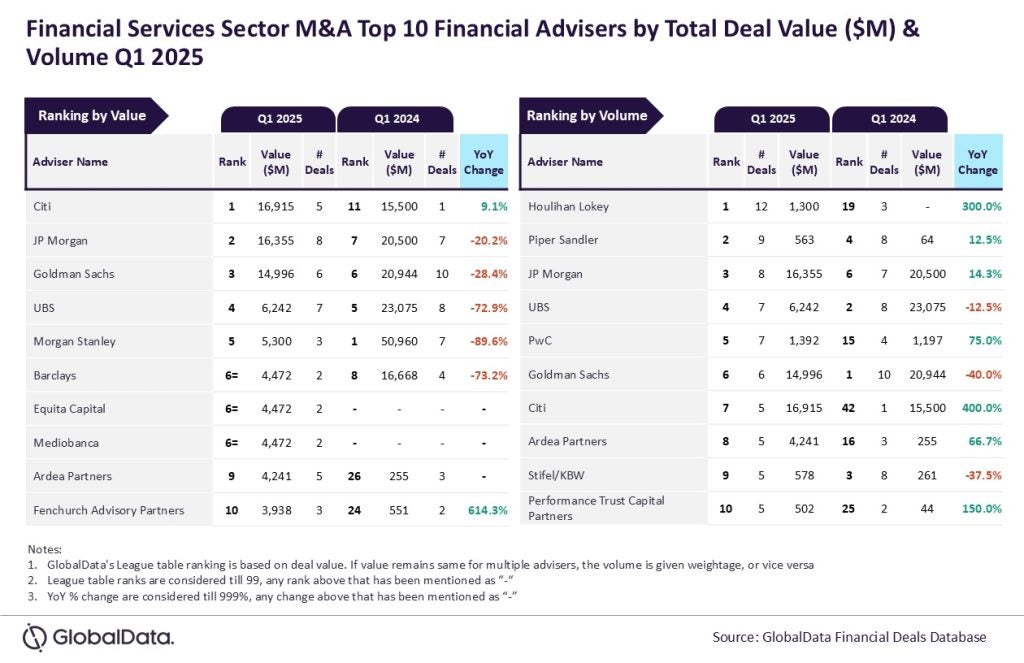The Canadian Payments Association, the agency responsible for Canada’s core payments infrastructure, is in the midst of a modernisation effort to ensure the country’s systems meet users’ needs. This will involve introducing Faster Payments as well as the XML-based ISO 20022 financial messaging standard. Robin Arnfield reports
The CPA is consulting its members, Canadian deposit-taking financial institutions, and Canadian payments industry stakeholders in order to generate a shared vision of what needs to be done to modernise Canada’s payments systems.
"The payments industry is changing so fast that we need to pause and think how the Canadian payment ecosystem has to be modernised," Carol Ann Northcott, the CPA’s Vice-President, Risk, Security and Research and Chief Risk Officer, tells EPI. "We’re taking a holistic view to get the bigger picture of what needs to be done, rather than just focus on individual projects and upgrades. In order for us to know where the Canadian payments ecosystem is going, we need a shared vision involving the main stakeholders. There are three elements to this process – carry out research, find out about global best practices, and determine end-user needs in Canada."
Northcott expects the consultation with stakeholders about their needs and priorities to be completed by late 2015, so that, during 2016, the CPA can evaluate what the outcome means for its core CPA clearing and settlement systems. "Only once we understand what stakeholders want, can we ask ourselves what we must do to our core payment systems to help them achieve their goals," she says.
"It’s promising to see Canada examining what next-generation payment systems could look like and how they can be shaped to fit the demands of the market," says Tristan Hugo-Webb, associate director of US-based Mercator Advisory Group’s International Advisory Service. "This is by no means unique as it’s something every government will have to consider and quickly. However, it’s encouraging to see Canada take a strong step forward, and its eventual decision could shape how the industry evolves in the years ahead."
Discussion paper
In September 2015, the CPA and the Bank of Canada, the central bank, published a discussion paper titled "Public Policy Objectives and the Next Generation of CPA Systems: An Analytical Framework."
The report says the Canadian payments landscape is changing rapidly due to drivers such as:
- User demands for fast, secure and information-rich payments, which are being met by technology and standards advancements in the wholesale space such as risk-management tools and the retail space such as mobile payments;
- New retail payments players such as Apple Pay and Shopify, which leverage technology to enter new markets and transform the payments experience for consumers and businesses;
- Globalisation has increased the demand from corporations and FIs for an efficient and effective cross-border payments experience as well as straight-through payments processing;
- Coming out of the 2007-09 financial crisis and, given the retail payments space’s rapid evolution with new technologies and new players, regulators are holding financial market infrastructures to more stringent regulations and standards for risk management.
The report outlines the most critical issues the Canadian payments industry needs to investigate in order to improve core payment systems:
- A core payment system should provide rich functionality, allowing for value-added services that can evolve with changing technologies;
- In order for new market entrants to maximise the efficiencies they offer Canadians, new entrants’ access to the payment system must be considered. With access comes new risks, which requires the industry to strike the right balance between efficiency and safety as it evolves to meet consumer needs;
- It is intuitive to think everyone wants everything faster, but preferences and needs around timeliness vary. The true demand for timeliness in payments and how best to provide it must be better understood in the Canadian context.
Future-proof
"We want to develop function-rich features for our core payment systems which allow for innovation on the front-end," says Northcott. "But these features need to be future-proof and upgradeable, as the payments industry is moving so fast and we don’t want the features to be out-of-date by the time they’re launched. It’s also important to provide new entrants with access to the payment system, while making a trade-off between risk and efficiency."
Northcott says the CPA is studying how other jurisdictions such as the UK have balanced granting payments system access to new entrants with the need for risk management.
"It’s very important for the CPA to understand the reasons why other jurisdictions have implemented specific reforms to their payments infrastructure, such as the UK’s introduction of Faster Payments," she adds.
"We can’t just say, for example: ‘the UK introduced Faster Payments, so we should do so too.’ We need to introduce Faster Payments in the right way for the specific needs of the Canadian market. There isn’t a ‘one size fits all’ approach to Faster Payments that suits all categories of end-users. For example, should we speed up both clearing and settlement or just clearing, and should we introduce Faster Payments just for consumers or also for businesses?"
Core payment networks
The CPA, which is governed by the Canadian Payments Act under oversight from the Finance Minister, plays a similar role to associations such as Payments UK and the Australian Payments Clearing Association. It operates the Automatic Clearing and Settlement System (ACSS) and the Large Value Transfer System (LVTS).
In 2014, the CPA cleared and settled 6.8 billion payments worth a total of C$44.9trn ($33.7trn), equivalent to C$178.1bn ($133.6bn) each working day.
The ACSS is a bilateral/distributed system enabling CPA-member FIs to exchange payments data with each other for low-value transactions, offering T+1 clearing and settlement. The CPA also operates the US Bulk Exchange (USBE), a parallel system to the ACSS which handles payment items in US dollars, drawn on and payable to Canadian bank accounts but settled in the US.
The ACSS provides end-of-day clearing and settlement of cheques, automated fund transfers (AFTs), Interac debit card transactions, and bill payments via online banking. AFTs are pre-authorised debit (standing orders) and credit transfers between consumers and merchants, while Interac is Canada’s domestic debit card network.
The ACSS was built in the early 1980s, when cheques were the dominant payment method. This makes it older than the US automated clearing house (ACH) system, which uses a central counterparty for the exchange of value.
As part of its review, the CPA is considering whether the ACSS should be replaced with a multilateral ACH based on a centralised clearing and settlement system model. "Both distributed networks and centralised ACHs have pros and cons," says Northcott.
Since August 2013, the CPA has allowed its member FIs to accept remote deposit capture of cheques via electronic imaging at ATMs and mobile devices.
The LVTS is an electronic clearing and settlement system that is used for large-value wire transfers between FIs. It processes the majority of Canadian business payments and securities trades, handling 85% of all CPA transactions by value and 1% by volume.
LVTS payments, which are backed by collateral pledged to the Bank of Canada by participating FIs, are near-real time and irrevocable. Visa and MasterCard’s Canadian members use the LVTS for end-of-day clearing and settlement, although neither scheme belongs to the CPA.
Strategic plan
Modernising Canada’s clearing and settlement infrastructure to ensure it continues to meet the demands of users and delivers innovation is a key element of the CPA’s multi-year Strategic Plan.
This process will involve establishing ISO 20022 as Canada’s financial messaging standard. Currently, Canadian electronic transfers carry only limited remittance information, which is based on antiquated messaging standards.
"We will use ISO 20022 as the interoperability standard for enhanced remittance information," says Northcott. The lack of electronic remittance information provided by the ACSS is a key reason why Canadian SMEs have failed to embrace electronic B2B payments and have stuck with cheques. "A huge reason why SMEs still use cheques is the friction in using electronic payments," Northcott says.
The Bank of Canada
Although there are no specific regulations forcing the CPA to introduce Faster Payments, the Bank of Canada has indicated that Canada’s core national clearing and settlement systems should be upgraded to better meet the needs of consumers and businesses.
Lawrence Schembri, the Bank of Canada’s deputy governor, gave a speech in June 2014 outlining high-level directions for modernisation. His speech envisages a Canadian payments system with six essential attributes:
- High speed – end-to-end processing in near-real-time;
- Low cost – efficient and convenient;
- Open access and ubiquitous usage;
- Improved cross-border functionality;
- Safe, sound and reliable;
- Secure – to protect the private information of users.
Schembri called for Canada’s core domestic clearing and settlement systems to be upgraded and for cross-border payments to be improved. "The ACSS is showing its age," he said. "Access is limited, settlement occurs the next day, and end-to-end processing of payments is slow. The LVTS was implemented in 1999. It, too, could benefit from technological enhancements to clear and settle both retail and wholesale payments more efficiently."
"An analysis by the CPA revealed that international payment needs aren’t currently being met," Schembri said. "Compared with domestic payments, cross-border payments involve higher transaction costs and longer processing times associated with converting from one national payment system to another."
In August 2015, the C.D. Howe Institute, an independent Canadian public policy group, published "Money in Motion: Modernising Canada’s Payment System," which calls for the digitalisation of the ACSS and the elimination of paper cheques. According to the report, Canadians write 800 million cheques a year, of which 46% are written by businesses, 42% by consumers, and 12% by government bodies.
"A first step toward modernising the Canadian payment system would be replacement of current cheque processing with digital methods," the report says. "This step alone should save Canadian businesses several billions of dollars per year. It will require reorganising the CPA’s clearing and settlement systems as a hub-and-spoke and replacing payee-pull cheques (where the payee’s FI submits the transaction to the settlement system) by payer-push digital payments (where the payer’s FI submits the transaction)."
The government
According to "Public Policy Objectives and the Next Generation of CPA Systems: An Analytical Framework," the Canadian government has identified three public policy objectives which should be achieved by the Canadian payments ecosystem: safety and soundness; efficiency; and meeting the needs of end-users and protecting their interests.
Schembri said in his 2014 speech that the Bank of Canada is working with the government’s Department of Finance to develop a comprehensive framework for overseeing payment systems which is able to meet these public policy objectives.
Under Canada’s Payment Clearing and Settlement Act, the Bank of Canada has the role of overseeing systemically important payment systems. Currently, five payment systems have been designated as systemically important: the LVTS, CLS Bank, Canadian securities depository and settlement service CDSX, the Canadian Derivatives Clearing Service, and LCH.Clearnet Limited’s SwapClear Service.
In December 2014, the Bank of Canada’s oversight responsibilities under the Payment Clearing and Settlement Act were expanded to include prominent payment systems. The Central Bank said that prominent payment systems, while not systemically important, are critical for economic activity in Canada as disruptions or failures have the potential to pose "payments system risk". It said it will perform an assessment of prominent payments systems and determine whether to designate any as having the potential to pose payments system risk.
"The Bank of Canada has signalled its expectation that the ACSS will be designated as a prominent system and subject to increased oversight requirements," the CPA’s 2014 annual report says.
In April 2015, the Department of Finance announced a two-month public consultation on the oversight of national payment systems.
"The current (regulatory) oversight of payment systems in Canada is focused on the core national payment clearing and settlement systems and, to a lesser extent, on retail payment systems supported by regulated financial service providers such as debit and credit card networks," the Department of Finance said. "This leaves other non-bank retail payment service providers without specific regulation or oversight, resulting in an inconsistent approach for addressing similar risks posed by the activities of different payment service providers. It can also create confusion for consumers and businesses, who may expect similar levels of user protections irrespective of the payment method or service that they use."
Non-bank retail payment services identified by the Department of Finance include cryptocurrencies, international money transfers via Western Union, and digital wallets provided by telcos and PayPal.
Bharat Masrani, TD Group’s president and CEO, and Dave McKay, RBC’s president and CEO, have both called for the introduction of regulations for new retail payments entrants. Both executives warned that, because new entrants are not subject to the same regulations as Canadian banks, they have an unfair advantage and could threaten the stability of Canada’s financial system.







